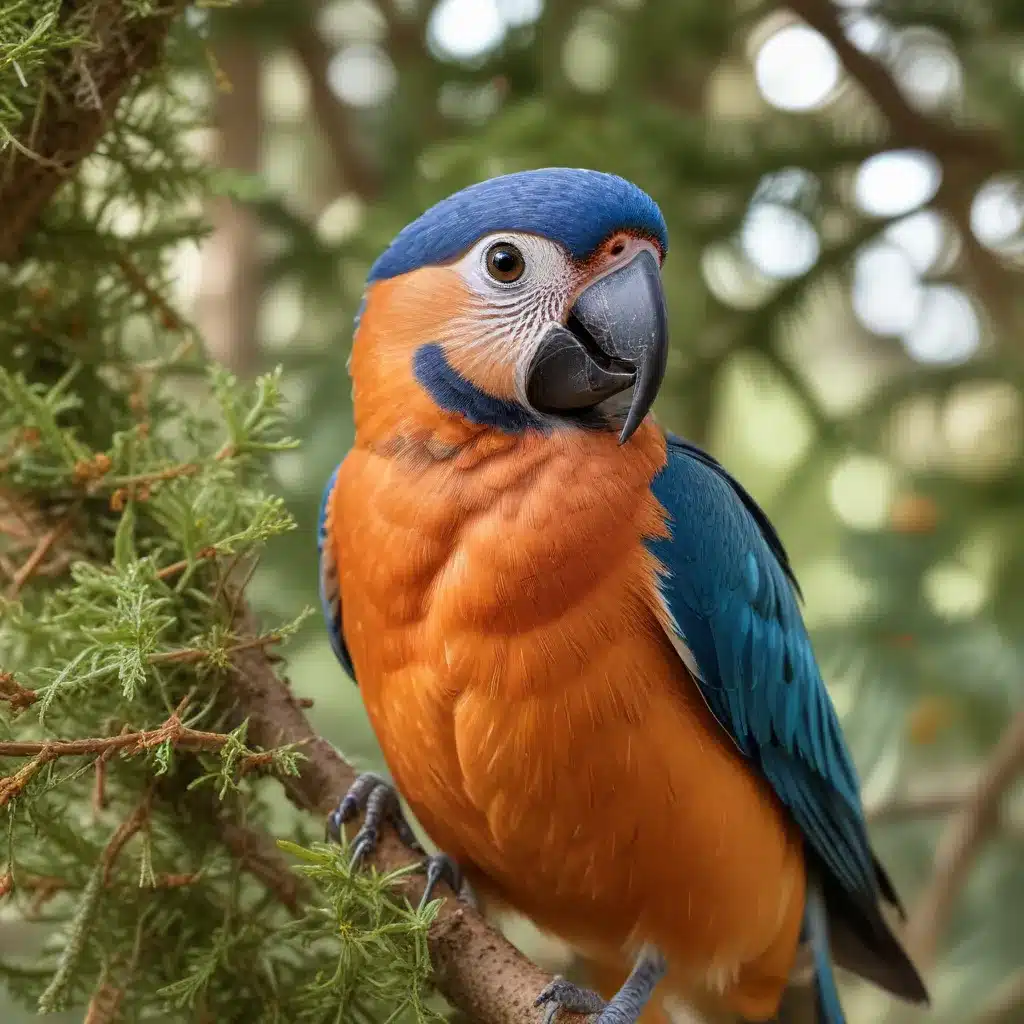
As an experienced avian caretaker and expert in the field, I’m passionate about helping bird owners like you create enriching environments that cater to your feathered friends’ unique needs. Birds are remarkable creatures, each species with its own fascinating behavioral traits and instinctual tendencies. By understanding and catering to these natural behaviors, we can not only promote their physical well-being, but also their mental and emotional health.
Avian Species Diversity
The avian world is incredibly diverse, encompassing over 10,000 species across numerous families. From the vibrant macaws and cockatoos to the diminutive budgies and canaries, each bird brings its own set of behaviors and requirements to the table. Understanding the nuances of your bird’s species is the foundation for providing appropriate enrichment and care.
Some of the most common avian families include parrots, finches, hummingbirds, hawks, and waterfowl. Within these broad categories, you’ll find a wealth of exotic species, each with its own unique adaptations and social structures. For instance, the highly intelligent African grey parrot is known for its exceptional mimicry abilities, while the playful cockatiel thrives on interactive toys and foraging opportunities.
Natural Behaviors of Birds
Birds are remarkable creatures, driven by a deep-rooted set of instinctual behaviors that have evolved over millions of years. Understanding these natural behaviors is crucial to meeting your bird’s needs and promoting their overall well-being.
Foraging and Feeding Behaviors
In the wild, birds spend a significant portion of their day engaged in foraging activities, seeking out a diverse array of foods to fuel their active lifestyles. From hunting for insects to cracking open seeds and nuts, these foraging behaviors are deeply ingrained in a bird’s psyche. Providing your captive bird with opportunities to mimic these natural foraging behaviors, through the use of puzzle feeders and scattered treats, can help satisfy this innate drive.
Social Interactions and Communication
Birds are highly social creatures, often living in complex flocks and maintaining intricate communication systems. In captivity, it’s important to cater to your bird’s need for social interaction, whether through regular handling, playtime with their human flock, or the introduction of a compatible avian companion. Observe your bird’s vocalizations, body language, and social cues to better understand their communication style and provide the appropriate level of interaction.
Nesting and Breeding Behaviors
For many bird species, the urge to nest and breed is a powerful driver of their behavior. In the wild, birds invest significant time and energy into constructing elaborate nests, incubating eggs, and raising their young. While captive breeding may not be suitable for all bird owners, providing nesting materials and observing your bird’s natural nesting behaviors can be a fascinating and enriching experience.
Enrichment Strategies for Captive Birds
Captive birds, no matter their species, require a diverse array of enrichment opportunities to thrive. By catering to their physical, cognitive, and sensory needs, you can help your feathered friend express their natural behaviors and maintain a high quality of life.
Physical Enrichment Techniques
Physical enrichment focuses on providing your bird with ample opportunities for movement, exploration, and play. This can include a variety of perches, ladders, swings, and climbing structures that encourage your bird to exercise their natural climbing and flying abilities. Additionally, offering a range of chewable toys, foraging feeders, and interactive puzzles can satisfy their innate need to manipulate objects and problem-solve.
Cognitive Enrichment Activities
Captive birds are often highly intelligent, with complex cognitive abilities that require regular stimulation. Engaging your bird in positive reinforcement training, such as clicker training, can challenge their problem-solving skills and strengthen the bond between you and your feathered companion. Additionally, rotating a variety of novel objects and changing the layout of their environment can encourage exploration and mental engagement.
Sensory Enrichment Opportunities
Appealing to your bird’s senses can also contribute to their overall well-being. Introducing a variety of textures, colors, and sounds can stimulate their natural curiosity and promote a sense of security in their environment. For example, hanging natural branches, providing mirrors for visual interest, and playing bird-appropriate audio can all enhance your bird’s sensory experience.
Promoting Species-Specific Behaviors
While the general principles of enrichment apply to most captive birds, it’s crucial to tailor your approach to the specific needs and behaviors of your bird’s species. By catering to their instinctual drives, you can help your feathered friend thrive and express their natural behaviors.
Addressing Instinctual Needs
Each bird species has evolved unique adaptations and behaviors to survive in their natural habitats. Whether it’s the foraging strategies of a cockatiel, the social dynamics of a flock of parakeets, or the nesting requirements of a cockatoo, understanding and addressing these instinctual needs is key to providing a fulfilling environment.
Encouraging Natural Exploration
Birds are inherently curious creatures, driven to explore their surroundings and discover new experiences. By offering a diverse array of toys, perches, and environmental features, you can encourage your bird to engage in natural exploratory behaviors, satisfying their innate drive for discovery and problem-solving.
Facilitating Flight and Movement
For many bird species, the ability to fly freely and move about their environment is essential to their physical and mental well-being. While the confines of a captive setting may limit their flight opportunities, providing ample space, appropriate cage size, and opportunities for controlled flight can help mitigate this limitation and promote their natural movement behaviors.
Remember, each bird is an individual, with its own unique personality and preferences. Observe your feathered friend closely, take note of their behaviors and interests, and tailor your enrichment strategies accordingly. By catering to their species-specific needs and natural instincts, you can create a nurturing environment that supports their overall well-being and helps them thrive in captivity.
To learn more about avian enrichment and behavior, I encourage you to visit Mika Birds Farm. Their comprehensive resources and expert guidance can provide valuable insights to help you navigate the fascinating world of our feathered companions.


